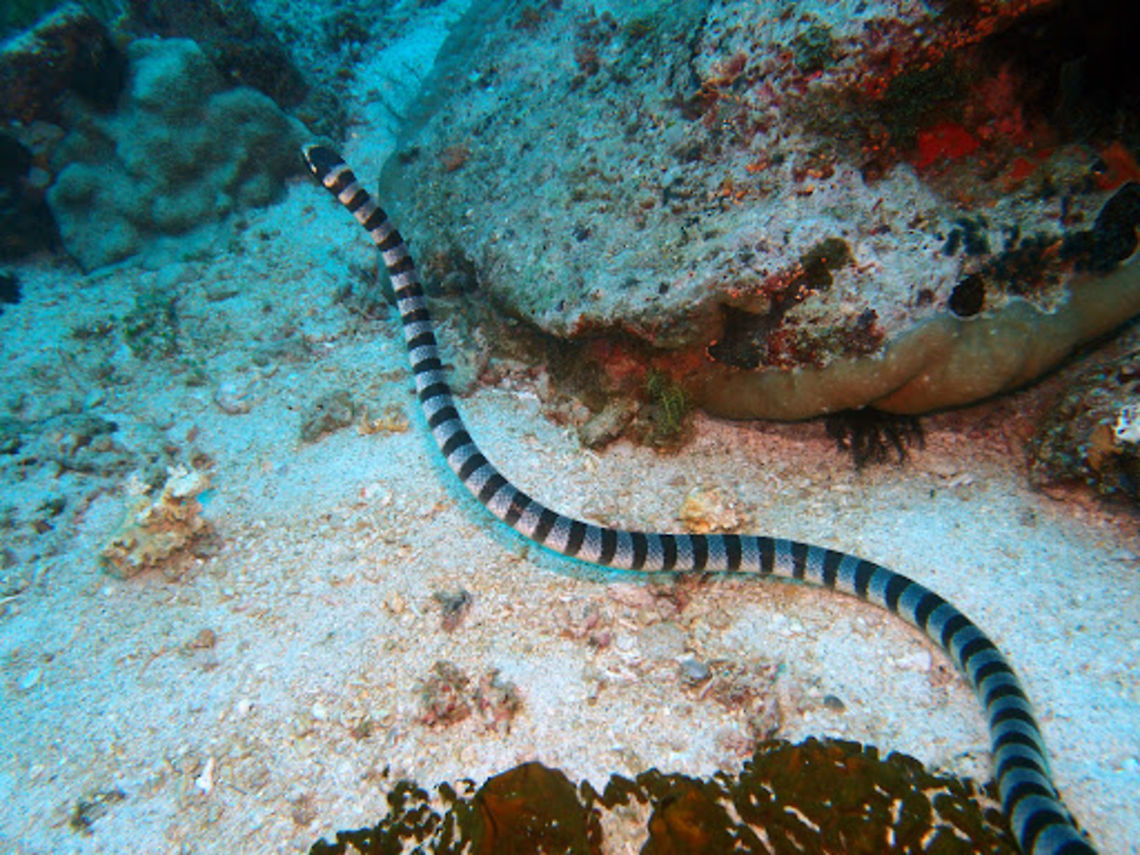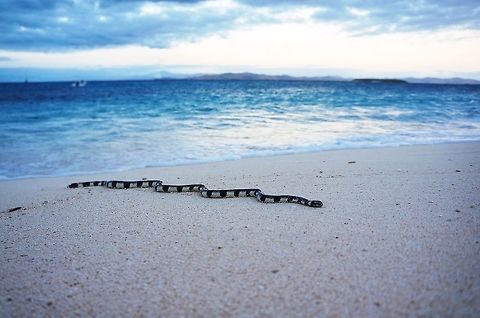 Country intro
Country intro
Colubrine Sea Krait (Laticauda_colubrina)
Dauin, Oct 5, 2012.
Black and white banded, blue eyes. Total length: males 875 mm, females 1420 mm. Banded sea kraits are often seen in large numbers in the company of hunting parties of giant trevally (Caranx ignobilis) and goatfish. Their cooperative hunting technique is similar to that of the moray eel, with the kraits flushing out prey from narrow crevices and holes. Kraits need to drink fresh water and regularly come onto land for that purpose. While probing crevices with their head and thus unable to observe approaching predators, banded sea kraits can fool their potential enemies to believe that their tail is the head. This is based on both colouration and tail movements, such that the lateral aspect of tail corresponds to the dorsal view of the head.
Habitat:
Banded sea krait is a wide-spread species in eastern Indian Ocean and Western Pacific. It is found from eastern coast of India east through coasts of SE Asia to Malay Archipelago and to southern China, Taiwan, and the Ryuku Islands of Japan. Vagrant individuals have been recorded in Australia, New Caledonia, and New Zealand.
Notes: They are venomous but are not aggressive to divers.

The colubrine sea krait, banded sea krait or yellow-lipped sea krait is a species of venomous sea snake found in tropical Indo-Pacific oceanic waters.
